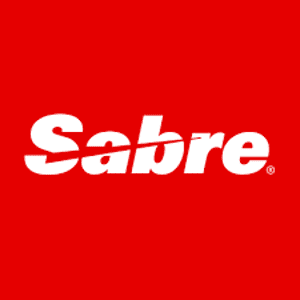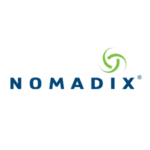 Recently, I visited Australia as part of a market visit. During my trip, I spoke directly with a number of hoteliers who all share a common goal: to increase direct bookings all year round, not just during the high season. While business travel is on the rise, it’s still not on par with 2019 levels, and projections indicate that a full Australian travel recovery likely won’t happen until 2026.
Recently, I visited Australia as part of a market visit. During my trip, I spoke directly with a number of hoteliers who all share a common goal: to increase direct bookings all year round, not just during the high season. While business travel is on the rise, it’s still not on par with 2019 levels, and projections indicate that a full Australian travel recovery likely won’t happen until 2026.
Currently, Sojern data shows that domestic searches have increased by 77% as of June 2023 compared to 2019. However, international searches have only seen a 3% increase, and regional searches have decreased by 23%. These figures help explain why some hotels have observed a higher influx of interstate travellers rather than international travellers. Domestic travel remains strong, accounting for 72% of the travel market, while the US (6%), France (4%), and the UK (4%) are the top-origin countries.
While all signs point to travel recovery, hoteliers still face several market challenges, the most significant of which is preparing for a cookieless world. By preparing now using first-party data, hoteliers can also overcome other market challenges and drive direct bookings.
Market challenges
Approximately 80% of all digital advertising relies on third-party cookies. While these cookies enable marketers to personalise adverts, they lack consumer permission and control over personal information. Now, as consumers increasingly demand more privacy, the value of third-party cookies for marketers is diminishing: Major browsers like Safari and Firefox already block them, and Chrome is set to disable them by late 2024. While GDPR currently governs European data privacy, as consumers seek greater control over how companies use their personal information, hoteliers must be prepared to comply with privacy laws if Australia adopts similar practices.
In addition to third-party cookies going away, OTA’s commissions are rising, with some charging up to 17%, and property occupancy is still very seasonal. While the current peak season has been strong, as soon as the holiday season ends the occupancy rate drops. Not only that, hoteliers face ongoing staffing issues, with New Zealand properties relaying they have been forced to close out all OTA inventories due to severe understaffing.
Deliver a personalised, cookieless experience with first-party data
To continue to reach potential travellers with relevant, personalised messaging while overcoming market challenges, hotel marketers will need to shift to newer, more relevant, and privacy-first strategies that reach and engage consumers. Consumers want a personalised experience and are 76% more likely to buy from brands that deliver. Hoteliers, regardless of size, can leverage first-party data to create the experiences guests want.
First-party data includes information collected by the brand, such as loyalty program details , booking information, observational data regarding guest interactions, site visitor information, cross-channel purchases demographics, and stay preferences. When hoteliers combine online data from social media, CRM systems, and their website with offline data, such as front desk interactions, they can engage potential travellers on a deeper, more personalised level. By drawing insights from the guest experience across all touchpoints of the buyer journey, hoteliers can tailor messaging and strategies to entice them to book. For instance, a traveller may prefer the convenience of requesting a towel via text over speaking to the front desk, or a repeat guest may always ask for a copy of a specific newspaper during their visits.
Not only can implementing a first-party data strategy adhere to privacy regulations and give consumers the experiences they want, it can also increase revenue and foster loyalty throughout the year. According to a recent report, 81% of hotels witnessed a revenue uplift after implementing a first-party data strategy, and 57% experienced guest satisfaction.
Overcome seasonal swings and drive direct bookings
While utilising first-party data is a great first step toward delivering the experiences travellers want, sustaining demand throughout the year requires an always-on approach. While it may be tempting to decrease marketing spend due to economic uncertainty, 60% of the businesses that increased media spend during the last recession saw improved ROI.
A destination may be a go-to spot for summer travellers or popular during Christmas, but the reality is that travel intent starts well before they book. While hotels will always experience seasonal spikes, always-on campaigns increase demand all year round. By targeting travellers who fit the ideal profile, always-on campaigns boost efficiency and maximise your budget by attracting the most valuable guests. When Sojern analysed average cost-per-action (CPAs), we found that always-on campaigns for destinations achieved a 33% lower CPA than burst media flights.
Hoteliers can take advantage of the current low season by offering special promotions and packages to attract travellers to their properties. Focusing on local marketing efforts and outreach to nearby communities to promote staycations and weekend getaways is an effective strategy to capitalise on strong domestic travel intent. Additionally, hotels can use the winter season to renovate and upgrade their facilities, train staff, and get ahead before the next high season. By proactively utilising quieter months to improve offerings and market their properties, hotels can increase year-round occupancy and bolster long-term revenue.
While hoteliers face a number of challenges, combining the power of first-party data and always-on campaigns empowers them to deliver personalised experiences that inspire booking any time of year.
About the author
Camille Venturina is the Senior Regional Manager, APAC, at Sojern.




















